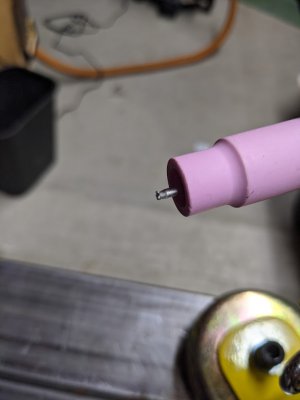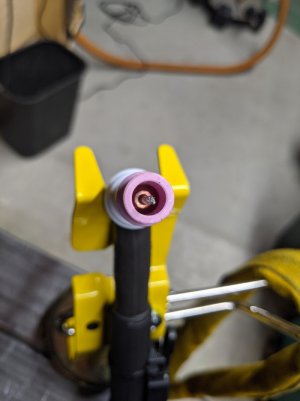- Joined
- Jun 10, 2019
- Messages
- 534
I had a quick question on how to read this electrode when I was welding 1/8" thick AL: What are all these little balls of junk on the tip? The project I was working on was 6061 which had been weather-exposed for a year. I did sand/scotchbrite and acetone, but I'm guessing that the metal still have been a bit dirty?
The tip was originally prepared at ~30deg and blunted. Machine settings were ~120hz, balance ~75% EN, 140a IIRC. I don't believe I dipped or touched the filler. For ref: i'm not a weldor, just a hack who has some classroom experience with gas & stick welding 15 years ago and then bought a TIG machine 2 months ago...so be gentle


The tip was originally prepared at ~30deg and blunted. Machine settings were ~120hz, balance ~75% EN, 140a IIRC. I don't believe I dipped or touched the filler. For ref: i'm not a weldor, just a hack who has some classroom experience with gas & stick welding 15 years ago and then bought a TIG machine 2 months ago...so be gentle





